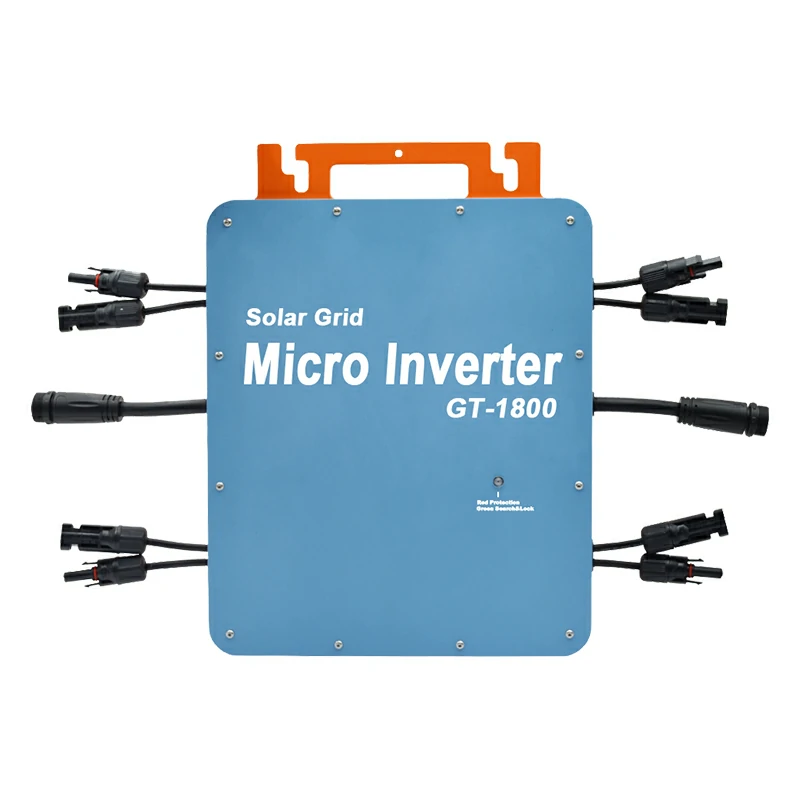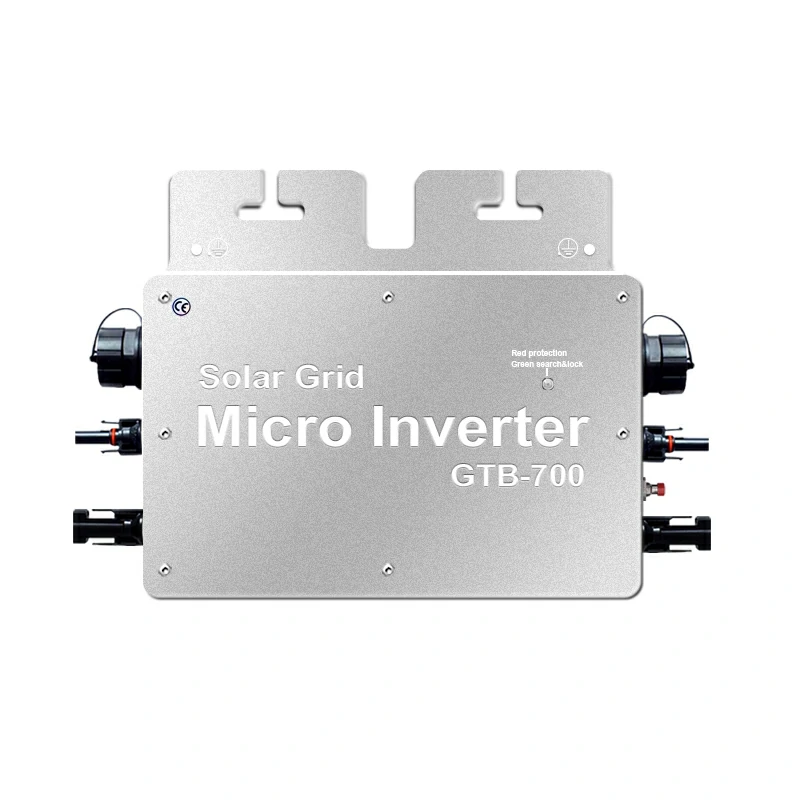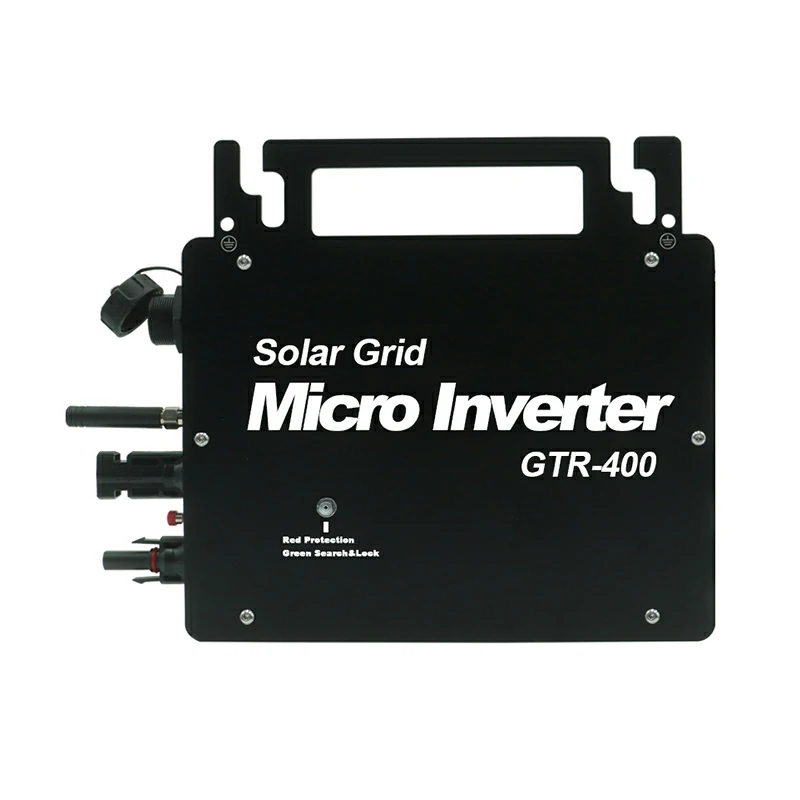Introduction
Grid-connected inverters play a crucial role in modern power systems, allowing renewable energy sources like solar panels to integrate seamlessly with the electrical grid. However, one significant concern with these systems is the phenomenon known as “islanding.”
Islanding occurs when a portion of the electrical grid continues to be powered by local sources, even though it has been disconnected from the primary grid. This situation can be dangerous for both utility workers and the public. In this article, we will explore how anti-islanding works with grid-connected inverters, addressing common questions and concerns for users considering this technology.

Basics of Grid-Connected Inverters
Definition of Grid-Connected Inverters
A grid-connected inverter is an electronic device that converts direct current (DC) from renewable energy sources like solar panels into alternating current (AC), which is compatible with the electrical grid. These inverters synchronize the output to match the grid’s voltage and frequency, ensuring smooth integration.
Critical Functions of Grid-Connected Inverters
· Synchronization: Aligning the inverter’s AC output with the grid’s voltage and frequency.
· Power Conversion: Efficiently converting DC to AC.
· Safety Features: Implementing protective measures like anti-islanding to ensure safe operation.
Role in the Power System
Grid-connected inverters allow homes and businesses to generate their electricity and reduce dependence on the grid, promoting energy sustainability and cost savings. They also help stabilize the grid by providing additional power during peak demand times.
Understanding Islanding and Its Hazards
Definition of Islanding
Islanding occurs when a distributed generation source, like a solar panel system, continues to power a section of the grid even after it has been disconnected from the primary grid. This can happen due to maintenance, faults, or other reasons.
Causes of Islanding
· Grid Maintenance: Planned shutdowns for maintenance can cause islanding if local generators continue to operate.
· Fault Conditions: Unplanned faults that isolate a section of the grid.
· Switching Operations: Manual or automatic switching operations that temporarily disconnect grid sections.
Potential Hazards of Islanding
· Safety Risks: Islanded systems can pose significant risks to utility workers repairing the grid, as they might expect the section to be de-energized.
· Equipment Damage: Islanded operation can lead to unstable voltage and frequency, damaging electrical equipment.
· Power Quality Issues: Fluctuations in power quality can affect both consumers and the stability of the broader grid.
Overview of Anti-Islanding Methods
Passive Anti-Islanding Techniques
Passive anti-islanding methods rely on monitoring grid parameters such as voltage and frequency to detect islanding conditions.
Examples
· Voltage Monitoring: Detects deviations in voltage levels.
· Frequency Monitoring: Monitors changes in frequency that indicate disconnection from the primary grid.
Advantages and Limitations
· Advantages: Simple implementation, low cost.
· Limitations: May not detect all islanding conditions, slower response time.
Active Anti-Islanding Techniques
Active anti-islanding methods involve the inverter actively injecting signals or perturbations into the grid to detect disconnection.
Examples
· Phase Jump Detection (Slip Mode Frequency Shift, SMFS): Detects changes in the phase of the grid voltage.
· Positive Feedback Method (PFM): Introduces minor disturbances and observes the grid’s response.
· Active Frequency Drift (AFD): Deliberately shifts the output frequency to detect islanding.
Advantages and Limitations
· Advantages: More reliable detection and faster response time.
· Limitations: More complex, higher cost.
Hybrid Anti-Islanding Techniques
Hybrid techniques combine passive and active methods to enhance reliability and detection speed.
Implementation
· Combination of Voltage/Frequency Monitoring and Active Perturbations: Ensures robust detection.
· Example Systems: Many modern grid-connected inverters use hybrid techniques to maximize safety and reliability.
Certification and Standards for Inverters
Ensuring that a grid-connected inverter meets relevant standards is crucial for safety and compliance.
Key Standards
· IEEE 1547: Defines the standard for interconnecting distributed resources with the grid.
· UL 1741: Specifies safety standards for inverters, converters, and controllers used in distributed energy resources.
Regional Certification Requirements
Different regions may have additional requirements for grid-connected inverters. Users should consult with their grid-connected inverter manufacturer to ensure compliance with local standards.
Common Anti-Islanding Techniques
Passive Anti-Islanding Techniques
Passive anti-islanding techniques are based on monitoring electrical parameters such as voltage and frequency to identify potential islanding scenarios.
Voltage and Frequency Detection
| Parameter | Description | Advantages | Limitations |
| Voltage Detection | Monitors voltage levels to detect deviations from normal operating ranges. | Simple implementation, low cost | Can be slow to detect islanding |
| Frequency Detection | Monitors frequency changes to identify inconsistencies indicating grid disconnection. | Reliable under certain conditions | May miss subtle islanding events, slower response |
Active Anti-Islanding Techniques
Active techniques involve the grid-connected inverter introducing specific signals or disturbances to identify islanding more effectively.
Examples
· Phase Jump Detection (Slip Mode Frequency Shift, SMFS): This method detects changes in the phase angle of the voltage waveform. If the phase angle shifts abruptly, it indicates a potential islanding situation.
· Positive Feedback Method (PFM): The inverter introduces minor disturbances and analyzes the grid’s response. A lack of response suggests islanding.
· Active Frequency Drift (AFD): This technique involves deliberately altering the output frequency of the inverter. If the frequency stabilizes at a new value, it indicates islanding.
| Method | Description | Advantages | Limitations |
| Phase Jump Detection (SMFS) | Detects phase angle shifts in voltage waveforms. | Fast response, effective detection | More complex, can be costly |
| Positive Feedback Method (PFM) | Introduces disturbances and analyzes grid response. | Highly reliable | Higher cost, more complex |
| Active Frequency Drift (AFD) | Alters inverter output frequency to detect stability. | Effective detection, quick response | Complex implementation, more expensive |
Hybrid Anti-Islanding Techniques
Hybrid techniques integrate both passive and active methods, aiming to combine the strengths of each approach for more reliable and faster detection.
Implementation
Hybrid methods typically involve monitoring voltage and frequency while actively injecting signals into the grid. This combination ensures robust detection and minimizes the risk of undetected islanding.
Example Systems
Many modern grid-connected inverters, such as those from leading grid-connected inverter manufacturers, employ hybrid techniques. This approach provides enhanced safety and reliability, which is crucial for both residential and commercial applications.
Certification and Standards for Inverters
Ensuring that a grid-connected inverter complies with relevant standards is essential for safe and effective operation.
Key Standards
· IEEE 1547: This standard defines the criteria for interconnecting distributed resources with the grid, including safety, performance, and reliability requirements.
· UL 1741: This certification specifies safety standards for inverters, converters, controllers, and interconnection system equipment used with distributed energy resources.
Regional Certification Requirements
Different regions may have specific requirements for grid-connected inverters. For instance, European standards might differ from those in North America. Users must verify that their inverters meet local regulatory standards.
Compliance and Safety
By adhering to these standards, users can ensure their grid-connected inverters operate safely and efficiently, reducing the risk of islanding and other potential issues. Consulting with a grid-connected inverter manufacturer can provide additional insights into compliance and safety practices.
Common User Questions
Is a Grid-Connected Inverter Reliable?
Yes, grid-connected inverters are designed to be highly reliable. They incorporate multiple safety features, including anti-islanding techniques, to ensure continuous and safe operation. Choosing a reputable grid-connected inverter manufacturer can further enhance reliability.
Does Anti-Islanding Affect Power Supply Stability?
Anti-islanding measures are designed to enhance overall grid stability. By preventing islanding, these systems protect both the grid and connected devices from potential disruptions and damage. Therefore, they do not negatively impact power supply stability.
How to Choose the Right Grid-Connected Inverter?
Selecting the appropriate grid-connected inverter involves considering factors such as:
· Power Capacity: Ensure the inverter can handle the expected load.
· Compliance: Verify that the inverter meets local and international standards (e.g., IEEE 1547, UL 1741).
· Manufacturer Reputation: Choose a well-established grid-connected inverter manufacturer known for quality and reliability.
Maintenance and Care for Grid-Connected Inverters
Regular maintenance is vital for ensuring the longevity and efficiency of grid-connected inverters. Some essential maintenance practices include:
· Routine Inspections: Regularly check the inverter and associated wiring for any signs of wear or damage.
· Firmware Updates: Ensure the inverter firmware is up-to-date to benefit from the latest improvements and security features.
· Cleaning: Keep the inverter clean and free of dust and debris to prevent overheating and other issues.
Conclusion
In summary, understanding how anti-islanding works with grid-connected inverters is crucial for ensuring the safety and efficiency of renewable energy systems. By utilizing a combination of passive, active, and hybrid techniques, modern inverters can effectively prevent islanding and protect both the grid and users. Adhering to relevant standards and choosing a reputable grid-connected inverter manufacturer further enhances the reliability and performance of these systems. For anyone considering integrating renewable energy into their power supply, consulting with experts and selecting the right equipment are essential steps towards a safe and sustainable energy future.




